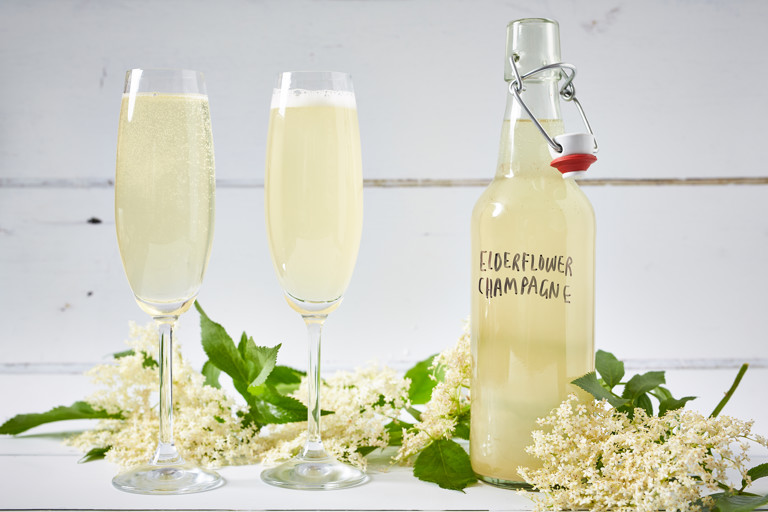Elderflower champagne
- Drink
- medium
- Makes 8 litres
- 30 minutes
While not true Champagne (which must be produced in the French region of the same name), this sparkling elderflower drink is a lighter, very tasty alternative. The perfumed flowers flavour the effervescent tipple, but do keep in mind the drink is alcoholic, so it's strictly for adults!
When sourcing elderflowers, always try and pick from relatively high up to ensure they're 'untouched' by four-legged animals! You will be removing any bugs before using the flowers, so pick full, clean flower heads without any bug infestations. It’s easy to get carried away, but only pick what you need – the flowers you leave on the plant will turn into elderberries later in the year, which are an amazing ingredient.
When brewing anything, it's paramount that all your equipment is clean and sterile – any dirt or residue can heavily impact the final flavour.
Ingredients
Metric
Imperial
- 15 sprigs of fresh elderflower
- 2l boiling water
- 6l water
- 1kg sugar
- 3 lemons, peel sliced off in strips
- 5g of yeast, (buy champagne yeast from homebrewing shops or websites)
Equipment
- Muslin cloth
- 10 litre container
- Funnel
- 2L plastic bottle 4
Method
Get in touch
Please sign in or register to send a comment to Great British Chefs.



